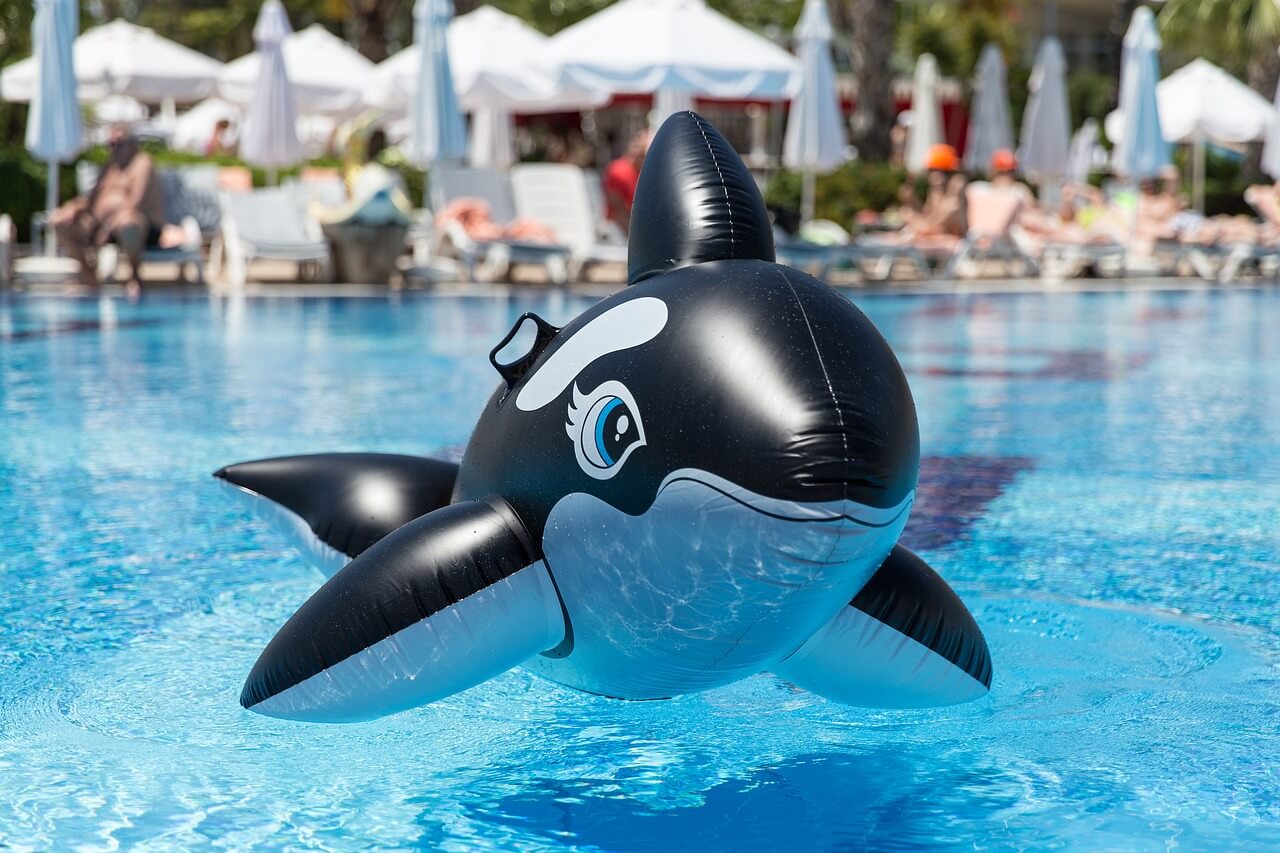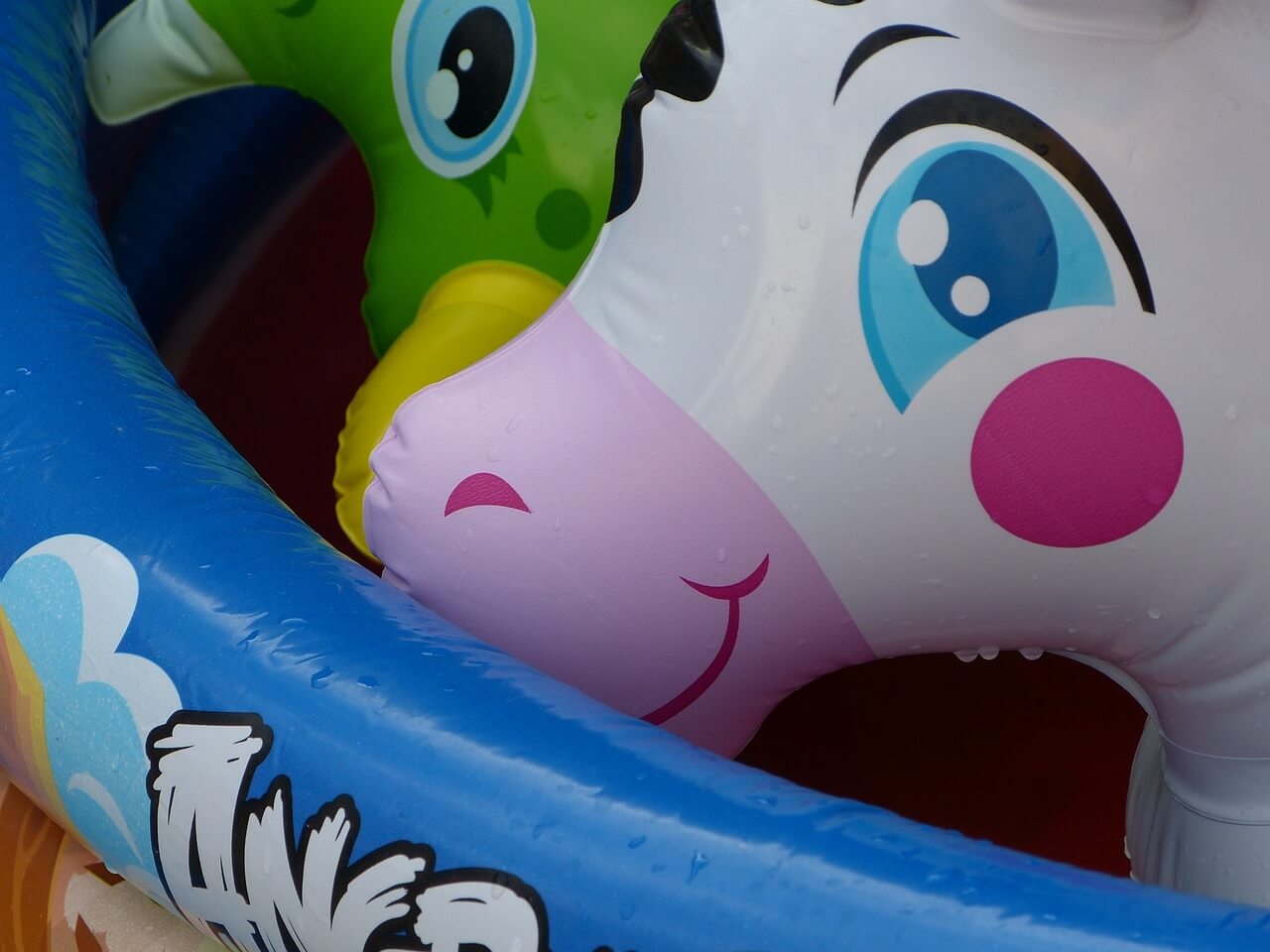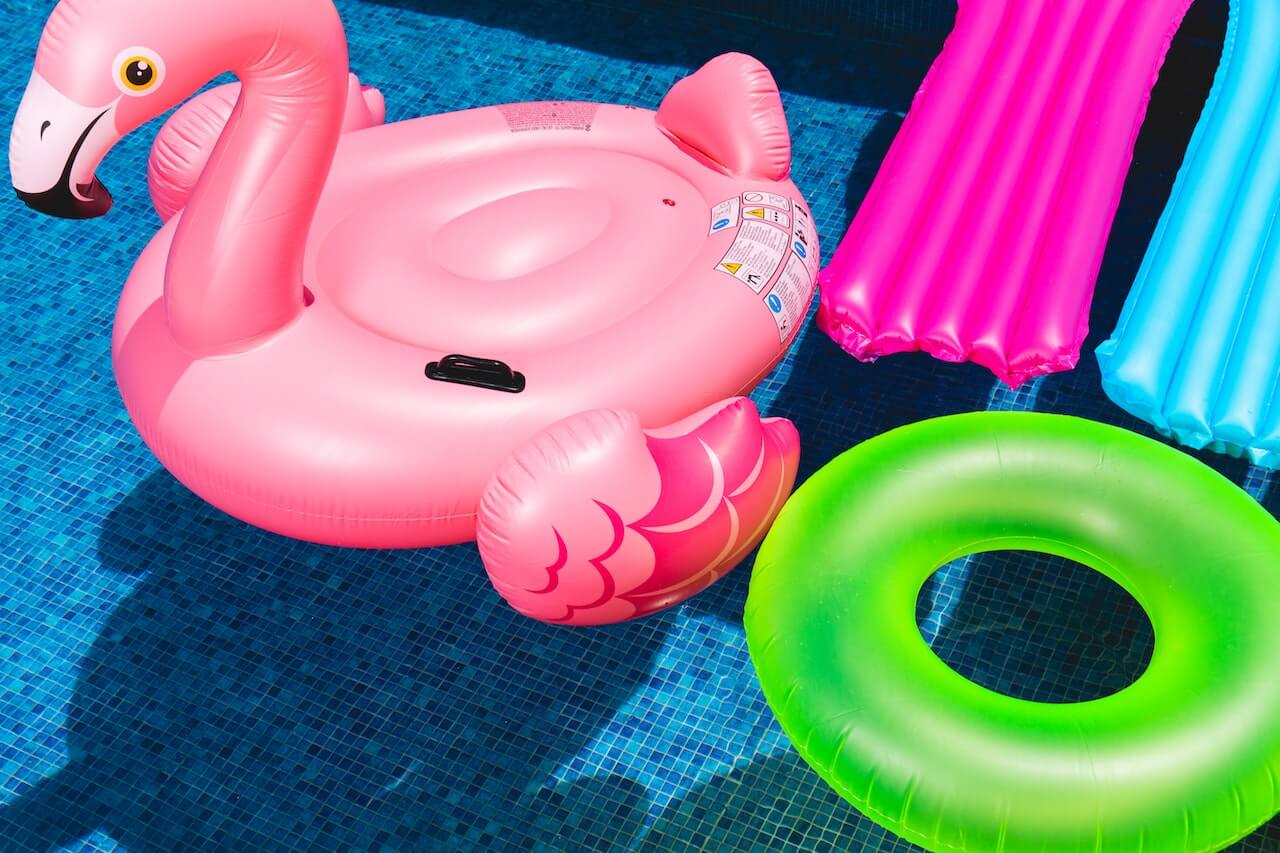Some pool floats can get surprisingly expensive, so before purchasing one, it’s prudent of you to wonder how long your pool floats will last? In this article, we’ll explore the factors that can affect the lifespan of your pool floats and how to care for them to ensure they last as long as possible.

As a pool float owner, the longevity of your floats largely depends on how well you take care of them. Factors such as exposure to the sun, proper cleaning, storage, and handling can greatly impact their durability. These factors make the difference between a pool float lasting multiple summers, or only one summer before needing to be replaced.
Whether you’re lounging on a giant flamingo or a relaxing recliner, it’s essential to know the best practices for maintaining and storing your floats to maximize their lifespan. By taking a few simple precautions, which we cover below, you can ensure that your pool floats will be around for countless summer fun and relaxation for years to come.
Factors Affecting Pool Float Lifespan

Several factors can affect the durability and longevity of a pool float such as material quality, usage frequency, UV exposure, and maintenance and care. Let’s go over each in more detail.
Material Quality
Pool floats are typically made from materials like vinyl and plastic, and the quality of these materials plays a crucial role in determining their lifespan.
High-quality materials ensure that the float can withstand wear and tear for several seasons, while lower quality materials may only last one season.
Invest in a pool float made of high-quality materials from reputable brands to enjoy its benefits for an extended period of time.
Usage Frequency
The frequency of usage also affects the life of a pool float. All other factors being equal, if you use your float regularly, it will wear out faster than if you use it occasionally – common sense, right?
However, even with heavy use, you can make your pool float last longer by taking great care of it and avoiding things that can damage it. Try to balance usage with care and storage to help extend the life of your pool float.
UV and Chlorine Exposure
Leaving a pool float floating in the pool exposed to the sun and chlorine for prolonged periods can cause the material to degrade faster. UV and chlorine exposure affects the color and structure of the float, leading to discoloration and wearing down of the vinyl material.
Plus, the moisture trapped on the float walls can create a breeding ground for molds, mildews, and bacteria. These microorganisms can cause the vinyl material to break down even more. So, it’s best to remove your pool float from the pool after use and store it somewhere dry and cool.
Maintenance and Care
Taking proper care of your pool float ensures its longevity. Keep your float away from sharp objects and clean it regularly. Avoid jumping or roughhousing on the float, as it could cause damage.
Proper storage, such as keeping it in a cool, dry place, also helps preserve the lifespan of your pool float. A properly maintained float can serve for a longer period than one that is simply left out in the pool.
Types of Pool Floats and Their Durability

When selecting the perfect pool float, you need to understand the different types available and their durability. This will help you make an informed decision and get the most out of your investment. In this section, we will explore inflatable, foam, and bean bag pool floats and discuss their durability.
Inflatable
Inflatable pool floats are popular because they can be deflated and easily stored when not in use. These floats are typically made of high-quality vinyl or PVC materials, which can provide a decent lifespan with proper care.
However, they are more susceptible to punctures and leaks which can cause air leaks. To prolong the durability of your inflatable float, make sure to inflate it properly, avoid sharp objects, learn how to patch your inflatables, and store it in a cool, dry place when not in use.
Foam
Foam pool floats are typically more durable than their inflatable counterparts. They are made of high-quality closed-cell foam that resists UV rays, mildew, and other environmental factors (though you should not unnecessarily expose them to the elements).
Additionally, foam floats don’t require inflation and are less prone to punctures or leaks. However, they can still become damaged by sharp objects, so treat them gently.
With proper care and handling, foam pool floats can last for several years, providing you with countless hours of relaxation in the water.
Bean Bag
Bean bag pool floats combine the comfort of a bean bag chair with the buoyancy of a pool float. These floats are typically made of durable, water-resistant fabric and filled with lightweight beads, making them resistant to water damage and mildew.
They also offer the advantage of being less prone to punctures and leaks. To prolong the life of your bean bag pool float, keep it clean and store it in a cool, dry place when not in use. With proper care, bean bag pool floats can be a long-lasting addition to your pool experience.
Ways to Extend Pool Floats’ Lifespan

Pool floats can be a fun addition to your pool activities, but like any other pool accessory, they can wear down over time. Here are a few ways to extend the lifespan of your pool floats:
Proper Inflation
Proper inflation is essential for the longevity of your pool float. Over-inflation can cause the float to stretch and weaken the material, while under-inflation may lead to sagging and general wear and tear.
Follow the manufacturer’s instructions for the recommended inflation levels, and always use an appropriate air pump for the task. Avoid using your mouth to inflate the float as this can introduce moisture and bacteria that can shorten the pool float’s lifespan.
Cleaning
Regular cleaning helps maintain the appearance and durability of your pool floats. First, wipe off dirt using a dry cloth. For a more thorough clean, fill a bucket with warm water and eco-friendly dish soap, and use a washcloth to scrub your float, making sure to get in all the nooks and crannies.
Rinse with clean water and let it dry completely before storing. If mold or mildew is present, use a bleach solution to disinfect the float, but always rinse thoroughly afterward to prevent damage to the material.
Storage
Proper storage plays a crucial role in extending the life of your pool floats. Always deflate your pool floats completely before storing them to prevent damage caused by excessive air pressure. Deflating them can be a pain, but there is a trick to deflate them quickly by holding the safety valve open with a match or metal straw.
To keep your pool floats in good condition, fold them neatly and store them in airtight containers or vacuum-sealed bags. This will protect them from dust, moisture, and pests. Do not place heavy objects on top of them.
Store your floats in a cool, dry place, away from direct sunlight to prevent discoloration and material degradation. Making sure to follow these steps will help ensure your pool floats last for many summers to come.
When to Replace Your Pool Float
Despite all your efforts, eventually you’ll need to replace a pool float. Unfortunately they aren’t recyclable, but taking good care of them will minimize how often you need to replace them.
Knowing when to replace your pool float helps maintain a safe and enjoyable swimming experience. Here are some signs that it’s time to say goodbye to your current float and invest in a new one.
Damaged or leaking valves: If you notice that your pool float’s valves are damaged or leaking air, it’s a clear indication that it’s time to replace the float. Constantly refilling a leaking float can be both time-consuming and frustrating, so it’s better to invest in a new one for a worry-free experience. Inspect your floats regularly for damage.
Fading or discolored material: Exposure to the sun and swimming pool chemicals can cause your pool float to lose its original color and brightness. Although this might not impact the float’s functionality, it’s a sign that the material is starting to degrade, and it may become more prone to damage soon.
Cracks, tears, or holes: Pool floats can develop cracks, tears, or holes over time due to regular wear and tear or even from sharp objects around the pool. Small punctures can often be temporarily fixed using a repair kit, but larger tears or multiple holes signify that it’s time to replace the float.
Unpleasant odors: If your pool float has developed a persistent odor, it might indicate that mold or mildew has taken hold. Wash and dry your floats to prevent such issues, but in case the smell doesn’t go away, consider replacing the float for hygiene reasons.
Loss of buoyancy: If your float is no longer able to support you or maintain its shape while in the water, it’s likely that the internal structure is compromised, and it’s time to invest in a new float.
Regularly inspecting and maintaining your pool floats will help extend their lifespan. However, when you notice any of the above signs, it’s best to replace your float for a safer and more enjoyable time in the pool.
Sources:
- https://winflatable.com/how-long-do-pool-floats-last/
- https://www.romper.com/life/how-to-store-pool-floats
- https://poolfloatlounger.com/how-long-do-pool-floats-last/
- https://poolonomics.com/best-pool-floats/
- https://www.funboy.com/blogs/funboy-life/how-to-store-pool-floats
- https://www.ifloats.com/blogs/news/helpful-tips-to-ensure-your-pool-floats-last
- https://floatiekings.com/blogs/news/how-to-store-pool-floats

